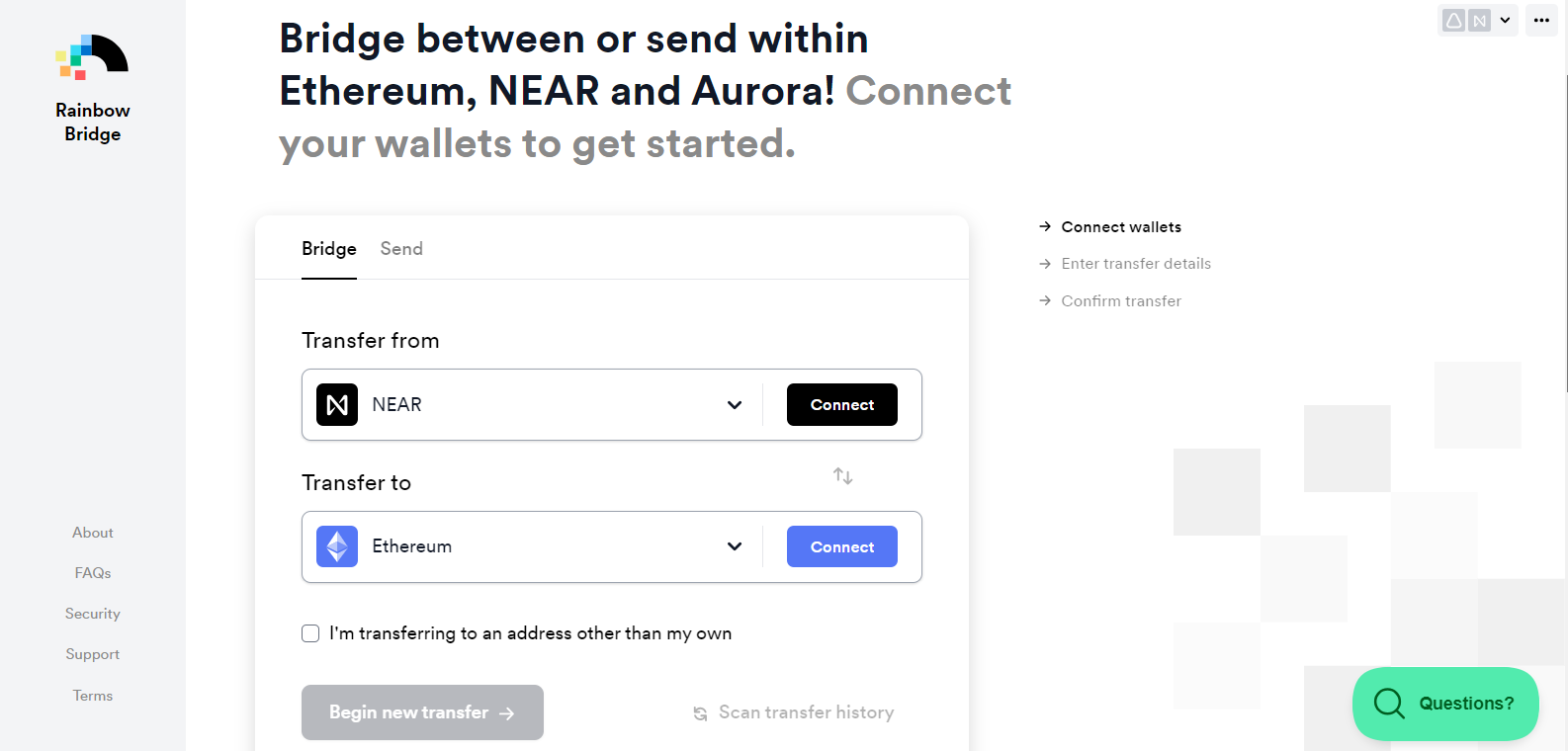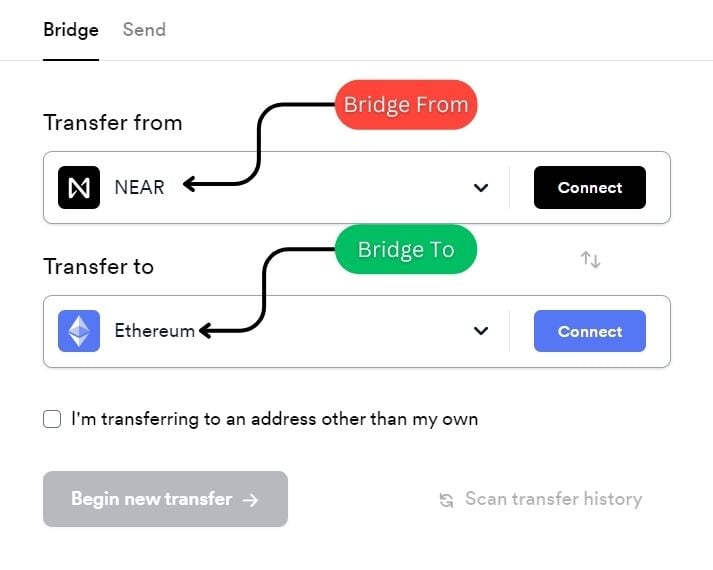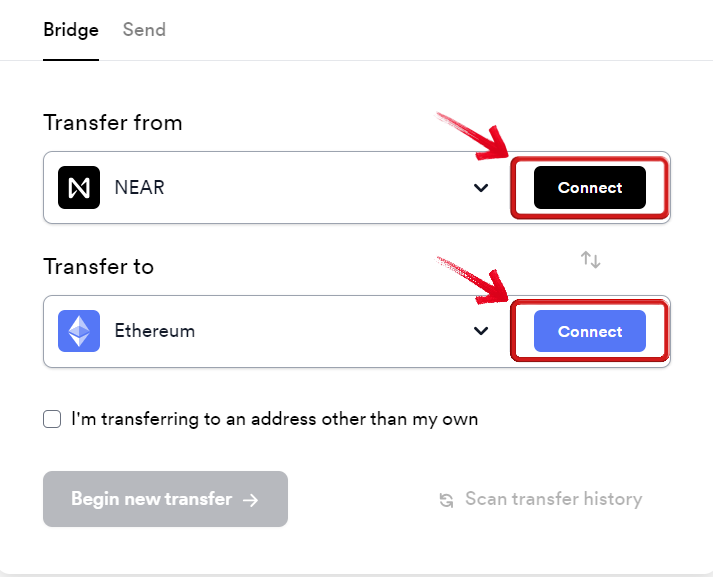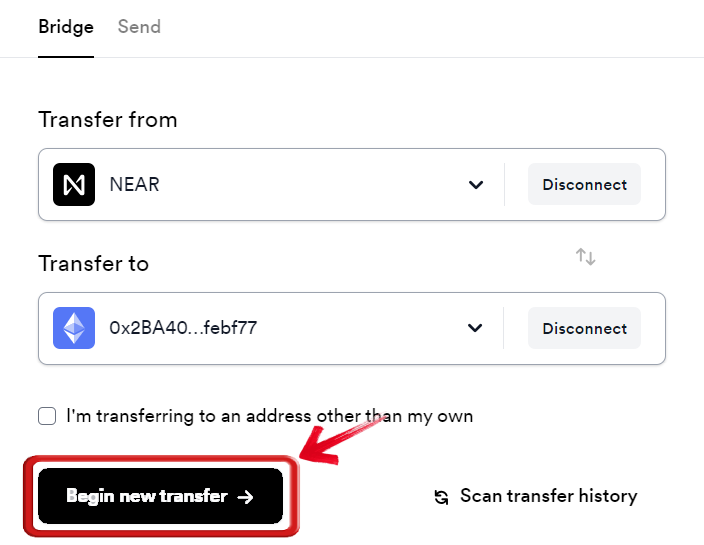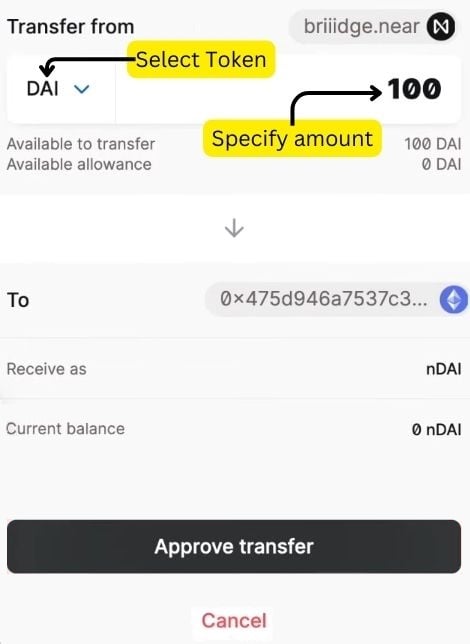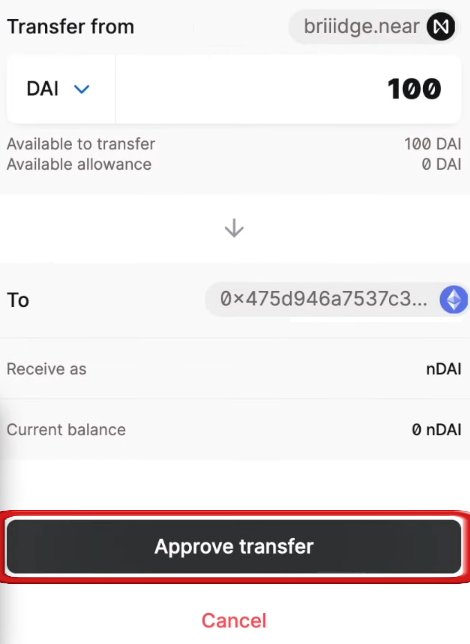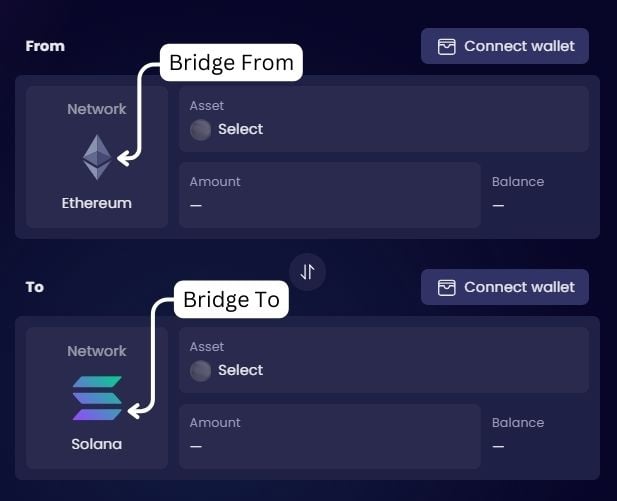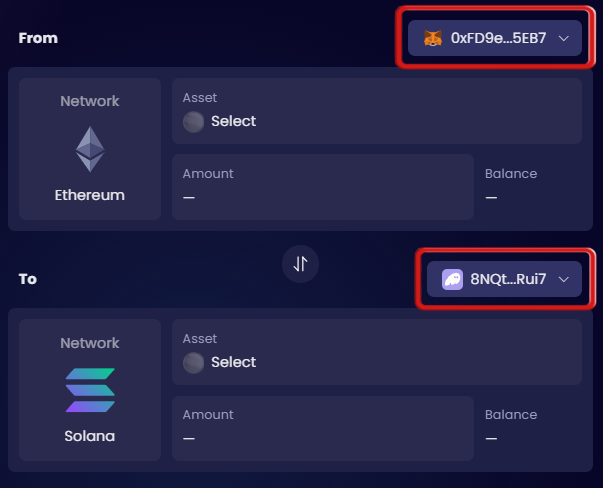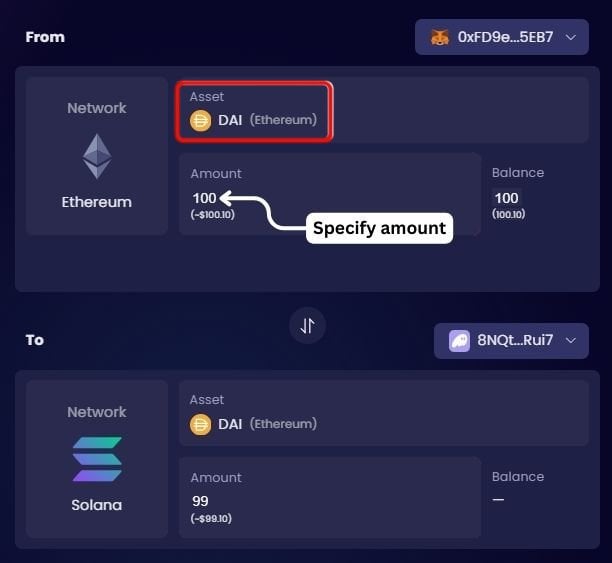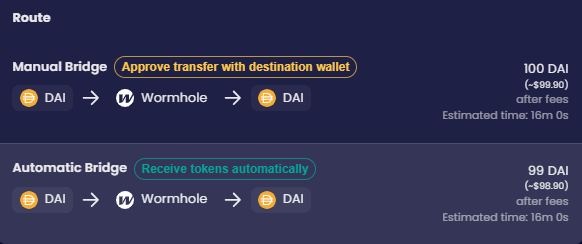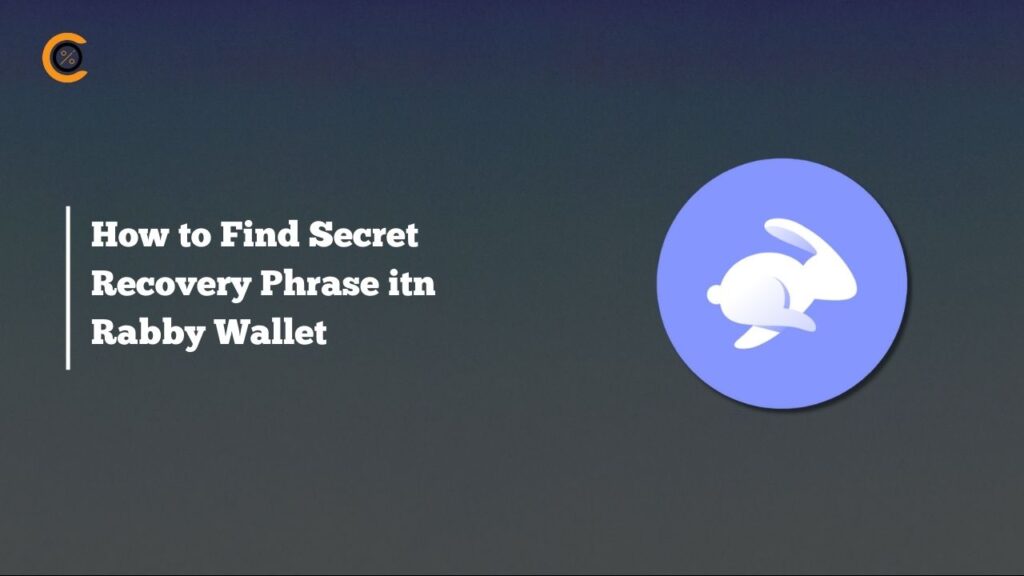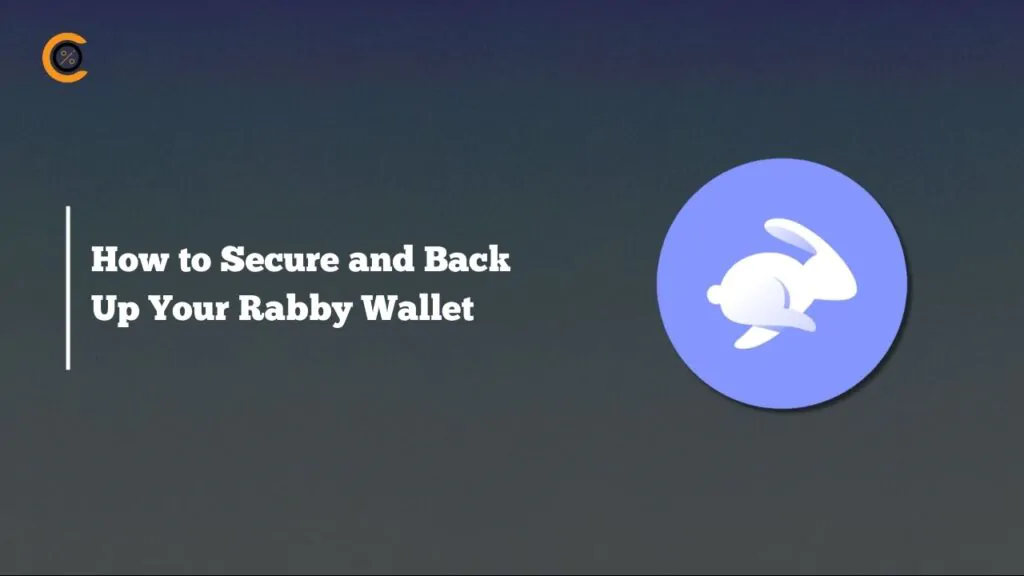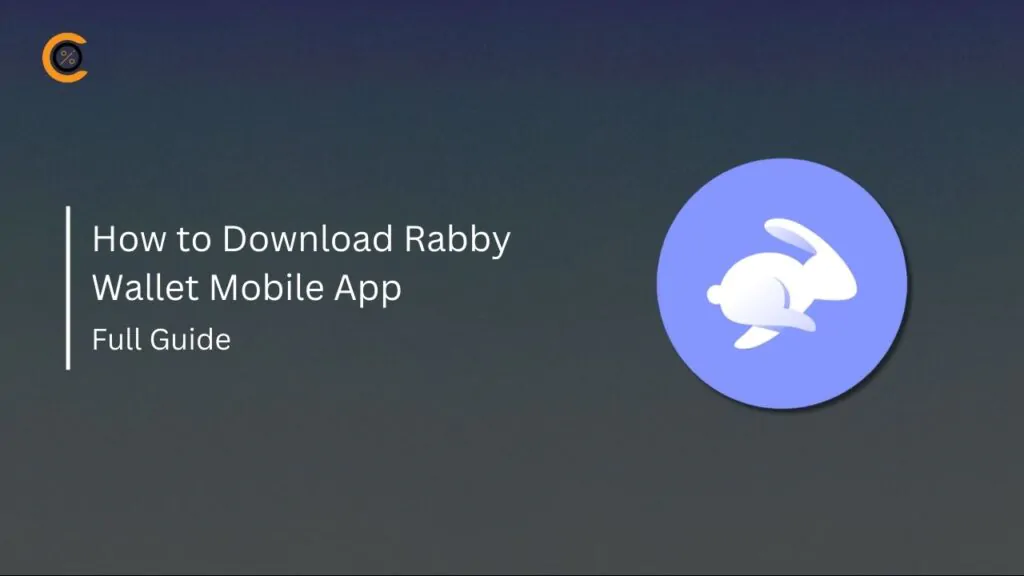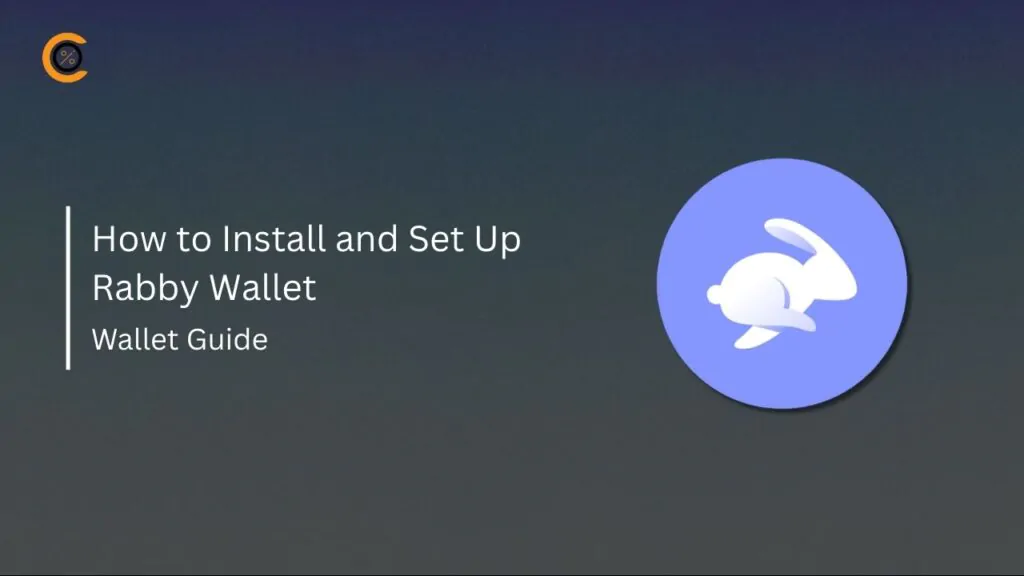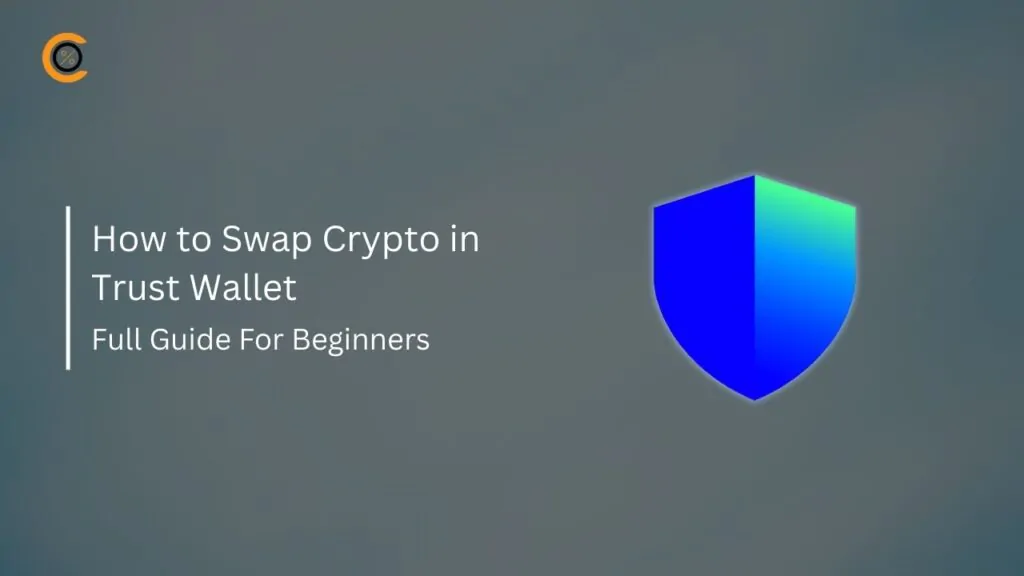Bridging Solana with NEAR Protocol is not possible, at least through reputable cross-chain platforms. However, there is a workaround that allows you to bridge from NEAR to Solana indirectly, and in this guide, we will explore this method.
Can I Bridge from Near to Solana?
There is no direct solution to bridge from NEAR to Solana, primarily because both Solana and NEAR Protocol are non-EVM compatible blockchains, which severely limits the bridging options between them. If we examine this issue more closely, NEAR’s compatibility with even EVM blockchains is quite limited. Although the native NEAR chain is not directly compatible with the Ethereum Virtual Machine (EVM), it provides EVM compatibility through Aurora, which is a smart contract platform running on NEAR Protocol that offers an EVM-compatible execution environment.
Important: It’s important to note that phishing scams and fraud are common when using untrusted bridges or fake websites. Connecting your wallet to these can lead to bad actors wiping out your funds.
Using Aurora, users within the NEAR ecosystem can first bridge their assets to the Aurora or Ethereum network using the Rainbow Bridge, and then utilize cross-chain bridges like the Portal Bridge to connect from Aurora to Solana.
How to Bridge from Near to Solana
So let’s have a quick overview of the process before we get into the steps:
- Bridge from NEAR to Aurora or Ethereum using the Rainbow Bridge.
- Bridge from Aurora or Ethereum to Solana using the Portal Bridge.
Now that we know what the process is going to be like, there are a few challenges that users might encounter before they begin:
- Create an account on the NEAR Protocol by holding assets worth 0.05 ETH.
- Create an account on a wallet compatible with the Aurora or Ethereum ecosystem.
- Gas fees can be high when bridging from NEAR to Aurora and then from Aurora to Solana. Also, considering there are two transactions involved, the fees will naturally be higher.
With this, let’s take a look at the steps required to bridge from NEAR to Ethereum using the Rainbow Bridge:
Step 1: Let’s visit the Rainbow Bridge on our browser.
Step 2: On the Rainbow Bridge, in the “Transfer from” field, select “NEAR”, and in the “Transfer to” field, select “Ethereum”.
Step 3: After selecting both networks, connect your wallets to the Rainbow Bridge. For Ethereum, try using MetaMask, and for NEAR Protocol, users can use MyNearWallet.
Step 4: Once the wallets have been connected, click on “Begin New Transfer” to bridge assets from NEAR to Ethereum.
Step 5: On the next page, select the token you wish to transfer from NEAR Protocol to Ethereum and specify the amount.
Step 6: After selecting the token, click on the “Approve Transfer” button to complete your bridging process.
Step 7: On the next screen, you will see the details of your transaction displayed.
So, up to this point, you have bridged from NEAR to Ethereum. Next, let’s switch to the Portal Bridge to bridge from Ethereum to Solana.
Step 1: On the Portal Bridge, select the blockchains you want to bridge between: Ethereum and Solana.
Step 2: After selecting the blockchains, connect your wallets to the Portal Bridge.
Note: Make sure to use the same Ethereum-compatible wallet in which you previously bridged your assets from NEAR to Ethereum.
Step 3: Now, select the token you wish to bridge from Ethereum and the asset you wish to receive on Solana.
Note: Select the same token you bridged from NEAR to Ethereum during this step.
Step 4: After selecting the token, simply specify the amount you wish to bridge to Solana.
Step 5: Review the transaction details, such as gas fees, platform fees, and the amount you will receive, before confirming the bridging transaction.
And the bridging is now complete. Though time-consuming, this process highlights the complexities of crypto at its finest and also shows that there is still a lot to be developed in blockchain. The gas fees throughout the process can vary, but it is recommended to use this method only for larger transactions to make the gas fees worthwhile.
For smaller transactions, a better approach would be to use centralized exchanges such as Binance or BingX, which allow users to easily buy and sell their crypto. Users can purchase NEAR or SOL tokens on such exchanges, and when needed, they can easily transfer these tokens to decentralized wallets like Phantom or MyNearWallet to explore the ecosystems of each blockchain.
For MetaMask users, an alternative to the Phantom wallet would be using the Solflare Snap, which allows users to extend their MetaMask wallet capabilities and interact with the Solana ecosystem, enabling them to stake, swap, or buy NFTs within the ecosystem.
Bottomline
Though complex, for crypto users seeking to bridge from NEAR to Solana, this is the best option available to date. The reasons it stands out as the best option are due to the cross-chain platforms involved—both Rainbow and Portal Bridge are highly rated. In fact, Rainbow Bridge is the official bridge on the NEAR Protocol. So, even with high fees at stake, users who are truly looking to maintain the security of their crypto transactions will definitely find this method rewarding.
FAQs
1. What are the future prospects for direct bridging between NEAR and Solana?
The development of blockchain technology is rapidly evolving, and there is ongoing research and development aimed at improving cross-chain compatibility. While a direct bridge between NEAR and Solana is not currently available, future advancements in interoperability protocols may enable seamless bridging between non-EVM compatible blockchains like NEAR and Solana. Keeping an eye on updates from both ecosystems can provide insights into potential solutions as they emerge.
2. Are there any alternatives to using bridges for moving assets between NEAR and Solana?
Yes, instead of using bridges, users can opt to use centralized exchanges like Binance or BingX. On these platforms, users can buy and sell NEAR and SOL tokens directly. Once purchased, these tokens can be transferred to decentralized wallets like Phantom or MyNearWallet. This approach is often quicker and can be more cost-effective for smaller transactions, avoiding the complexities and higher fees associated with bridging.
3. How can I ensure the security of my assets when using cross-chain bridges?
To ensure the security of your assets when using cross-chain bridges, always verify that you are using well-known and reputable bridges like Rainbow Bridge and Portal Bridge. Be cautious of phishing sites and double-check URLs before connecting your wallet. Enable two-factor authentication (2FA) where possible, and consider using hardware wallets for added security such as Ledger Nano X. Additionally, keeping your software and wallets up to date can help protect against vulnerabilities.
4. Can I bridge assets from Solana back to NEAR using the same method?
Bridging assets from Solana back to NEAR would follow a similar process but in reverse. You would first need to bridge from Solana to Ethereum using a cross-chain bridge compatible with Solana, then from Ethereum to NEAR using Rainbow Bridge. This process involves multiple steps and associated fees, so be prepared for potential costs and transaction times. Always ensure you are using reputable platforms for each step.



